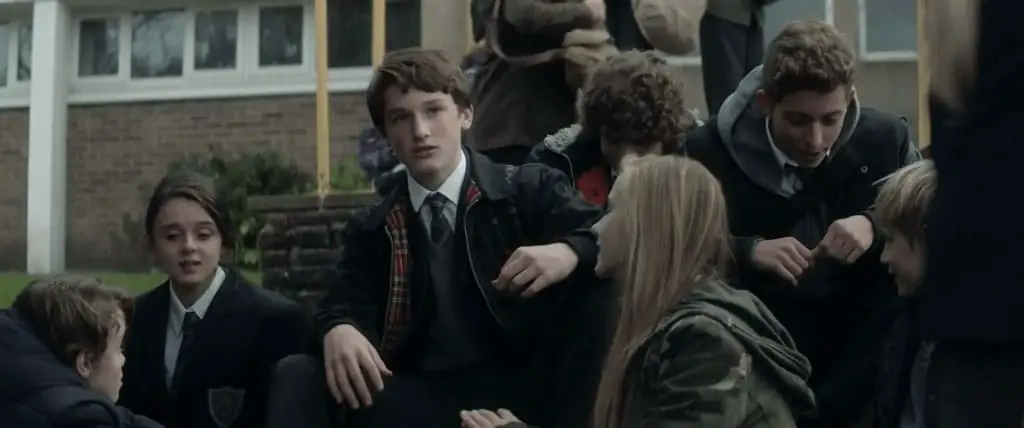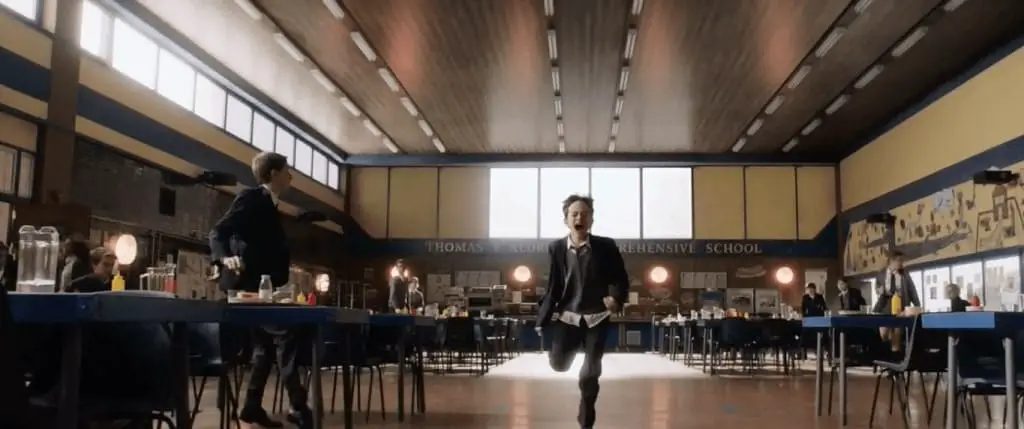A Monster Calls is a film, without a doubt, very conceptual and very high quality shot, although he conveyed and revealed the idea of the book not 100%. Nevertheless, if desired, it is quite possible to trace the main course of the narrative and its hidden components in it.

What if we give a visual form to the voice that is always with us?
The book A Monster Calls was written by Patrick Ness based on the idea of Shivan Daud, who came up with the concept of this story after learning about her incurable disease. And the illustrations, which largely determined the style of the film, were done by Jim Kay. Shivan Daud did not live to see the completion of work on the book: as if sorrow and pain were supposed to surround this children’s novel both outside and outside.
This work belongs to the genre of “low fantasy”, that is, a fantasy where there are no flawless heroes or any epic events. Just ordinary life, ordinary people and imperfection in all its manifestations.
Thoughts that shouldn’t be
This film is very illustrative from the point of view of a psychoanalytic concept, which has come a long way from the rather categorical theory of Sigmund Freud, was cut, took shape and embodied in a concept widely used throughout the world. Let’s clarify a little the main points that are directly related to the plot of the film “Voice of the Monster” (in case you do not know about them).
One of the basic tenets of psychoanalysis is the existence of id, ego and superego. Id is our unconscious, all our dark instincts, aspirations and even thoughts that arise by themselves, absolutely spontaneous and natural. The ego is the only component of the personality that interacts with reality: in fact, it is what we let into our consciousness, which constitutes us as such. And, finally, the Super-Ego is the numerous learned norms of morality, ethics, socially approved templates. This is such a kind of moral gendarme who determines what is good and what is bad.

In nightmares, Connor repeatedly fails to save his mother, who is falling into the abyss.
Now let’s get back to the movie. Connor constantly dreams that he is trying to keep his mother hanging over the abyss, but at the last moment he lets her go. It seems to him that he could have kept her longer, that he should have done it, but did not. Every hour, every minute, Connor suffers from the realization that his mother is going to die, and naturally thinks about getting rid of this suffering: about making it finally happen. But his Super-Ego tells him that this is bad. That he should not think so, that if he allows himself to think about this, the death of his mother will be on his conscience. As a result, the boy displaces these thoughts, tries to shove them as deeply as possible, to pretend that they do not exist.
But representatives of the psychoanalytic approach have long been convinced that the repressed does not disappear, but grows, boils, tearing a person from the inside, becoming the cause of neuroses and other diseases. For Connor, this need for liberation, for experiencing what he is trying to deny, is expressed in the appearance of an imaginary monster.
The child left all alone
Perhaps the situation would not have become so painful for the boy if someone helped him. But it so happened that there are people around him, and people seem to be pretty good, but, in fact, he is absolutely alone. Mom promises him that she will recover instead of preparing him for his death. The father lives with a new family and comes only occasionally. And although the relationship between him and Connor seems to be rather warm, this is not enough, because he just leaves again and leaves the boy alone. Teachers at school also sympathize with the child, but do not try to understand him, to give him what he needs, remaining outsiders behind a wall of decent phrases and actions.

“I’ll be there,” the monster says to Connor when he has to say “the simplest truth in the world.”
Meanwhile, thoughts of the death of his mother and that this will be the beginning of freedom for him, eat up Connor from the inside. And there is no one to tell him that this is normal. Who wouldn’t just admit that their mom is going to die soon after bumping into the protective barrier of violent denial. Who would look deeper and understand why the child burns out. None but a fictional monster.
Thirst for punishment
During the film, Connor repeatedly wants to be punished: for example, a father, a teacher. Even his relationship with Harry is to some extent aimed at receiving punishment. He asks more than once: “Will you punish me?” – with disappointment in his voice. This, again, is a manifestation of what he hides, presses in himself: thoughts about the death of his mother, which he considers unacceptable, and for which he experiences a permanent feeling of guilt. The guilty person must be punished so that his guilt becomes forgiven, and Connor tries to get rid of the inner tension at least in this way.

Connor needs a confrontation with Harry in his own way in this situation.
The stories that the monster tells the boy are a kind of workaround, ways, if not to remove the defense mechanisms, then at least to weaken them. Oddly enough, even adults often suffer from their own internal barriers, and do not realize it. Likewise, Connor is not aware of the logical error in his judgments, although from the outside it is perfectly clear to us: there is nothing amenable to his thoughts, and he will not be guilty of anything because he has these thoughts.

Monster stories are not fairy tales, because in fairy tales people are not like that.
The stories of people who seem to be doing something bad, but somehow do not become 100% bad from it, are designed to approach the issue from afar and, ultimately, heal Connor’s bleeding soul. Due to his age, it is especially difficult for him to get rid of his categorical and maximalism, and these stories become something like a life-giving balm: they reveal to him that it is not necessary to be only white or only black. You can be imperfect, you can allow yourself to be yourself, and not turn into a monster.
Erupting rage
Another important part of the plot is those parts of the story when Connor smashes everything around, or attacks Harry. Without them, this plot would be incomplete, scanty, not believable enough. The desire for love and life in us is no less strong than the desire for destruction and death, and when the latter is fueled by “failures in the system” associated with attempts to hide something important and exciting, then we inevitably break through. This is an absolutely natural expression of accumulated emotions that had no outlet, release from stiffness and tension due to defense mechanisms maintained almost 24 hours a day.

Reaching boiling point, Connor really explodes with rage.
Moreover, it is in principle typical for a child to periodically feel rage for some reason. Adults also have this impulse, but, as a rule, it is already somewhat more purposeful and is called rather anger. And this is what we must experience and feel, with which we must learn to cope. Among the family and friends of Connor, again, there is no one who could help with this: the boy has to wear the pale mask of a good child day and night. Therefore, a monster also teaches him to cope with natural aggression, even if it is destructive and unrestrained.
If you want to take some kind of moral out of the “Voice of the Monster”, then it, perhaps, should be as follows: be attentive to yourself and your loved ones. Do not hesitate to ask for help on time, and do not be lazy to offer it on time. Sensitivity, understanding and support is something without which we sometimes simply cannot survive.







